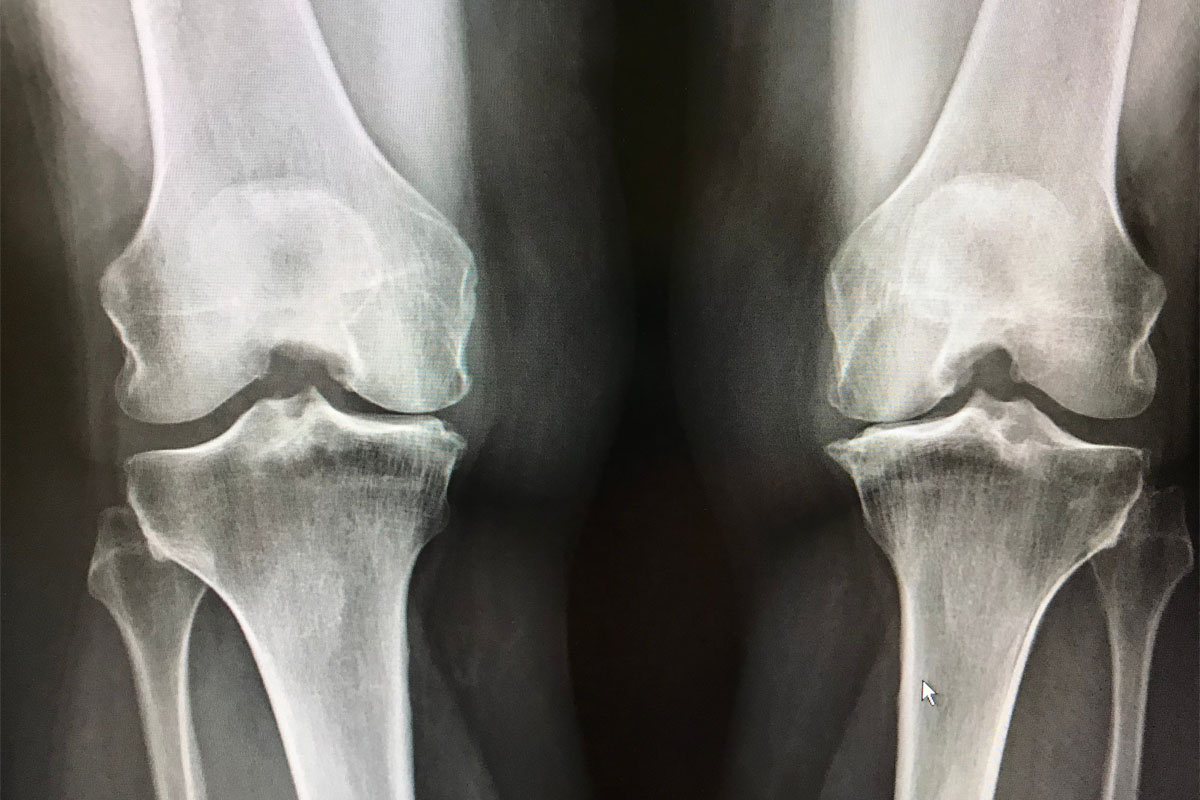Knee Problems

Knee problems are a typical gripe among adults and usually associated with typical wear and tear from day-to-day activities such as walking, bending, lifting and standing. Athletes that run or play sports involving jumping or quick rotating are also more subject to experience knee pain and issues. However, whether a person’s knee pain is caused by aging or injury, it can be an annoyance and even impairment in some situations.
What You Should Know
- The most common factors of knee pain are associated with aging, injury or continual stresses on the knee.
- Typical knee issues include strained or sprained ligaments, cartilage tearing, arthritis and tendonitis.
- The diagnosis of a knee injury or problem can comprise of a medical exam and typically the use of a diagnostic procedure(s) like an x-ray, MRI, arthroscopy or CT scan.
- There are both non- surgical and surgical treatments alternatives that are accessible to treat knee pain and problems subject to the type and how severe the condition is.
What Are Some Typical Knee Problems?
A lot of knee problems are the outcome of getting older and continuous wear and stress on the knee joints (like tendonitis). Other knee issues are an outcome of an injury or an abrupt movement that puts strain on the knee. Typical knee problems include the below:
- Sprained or tensed knee muscles and/or ligaments. A sprained or tensed knee muscle or ligament is typically caused by a strike to the knee or an abrupt twisting of the knee. Symptoms usually include pain, inflammation, and challenges walking.
- Torn cartilage. Injury to the knee could tear the meniscus. These tears can usually happen with sprains. Treatment might involve wearing a brace throughout an activity to safeguard the knee from additional injury. Surgery might be required to repair the tear.
- Swelling of the tendons might result from the over working of a tendon throughout certain activities like running, cycling, or jumping. Tendonitis of the patellar ligament is referred to as jumper’s knee. This typically happens with sports, like basketball, whereas the energy of hitting the ground following a jump puts strain on the tendon.
- Osteoarthritis is the most general type of arthritis that impacts the knee. This type of arthritis is a regressive process in which the cartilage in the joint slowly wears away. It often impacts middle-aged and older individuals. Osteoarthritis may be caused by excessive stress on the joint like repeated injury or being obese. Rheumatoid arthritis could also impact the knees by causing the joint to turn swollen and by eliminating the knee cartilage. Rheumatoid arthritis typically impacts individuals at younger age than osteoarthritis.
Knee Problem Diagnosis
Apart from a complete medical history and physical examination, additional tests for knee problems may include:
- X-ray(s)
- MRI scanning
- CAT or CT scan
- Arthroscopic procedures
- Bone scan(s)
Treatments for Knee Problems
If preliminary treatment methods do not provide relief, and X-rays indicate destruction of the joint(s), the orthopedic surgeon may recommend total joint replacement for the knee, also known as knee replacement.
Mobility Center In Mesa, Arizona
Mobility Center has been proudly serving the entire Phoenix, Arizona area since 1975 with the finest in mobility aids, scooters, wheel chairs, lifts and support equipment. Visit our convenient location to see the products and receive the individual attention that you deserve. Our service area includes Mesa, Apache Junction, Tempe, Chandler, Scottsdale, Phoenix, Glendale, Surprise, and Sun City. More Articles About Senior Living
- Best Walking Canes
- What Is a Rollator?
- 10 Common Mobility Scooter Problems
- Wheel Chairs Near Me
- Why Might An Older House Have More Safety Risks Than A New One?
- Types Of Mobility Aids
- How Much Does a Stair Lift Cost?
- Balance Exercises For Seniors
- 65 Quotes About Getting Older
- Elderly Home Safety Checklist
- The Best Places To Retire In Arizona
- Wheel Chairs For Sale In Phoenix, Arizona
- How Much Does A Wheelchair Cost?
- Top 5 Best Walkers For Seniors

